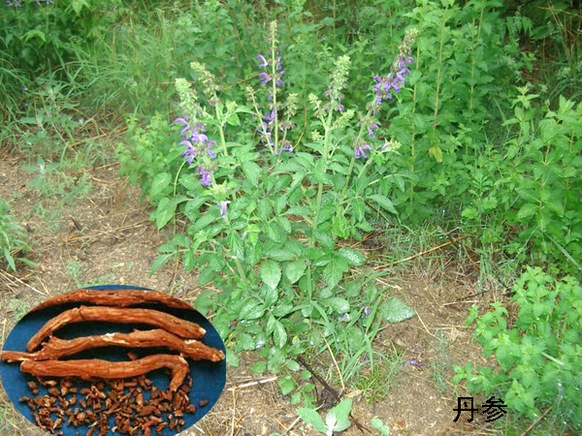Science:斑马鱼研究发现丹参的丹参酮IIA具有抗炎作用
英国谢菲尔德大学的研究人员据在斑马鱼中的一项新的研究报告,丹参酮IIA是在被称作“丹参”的中草药中所发现的一种化合物,它可能是抗炎的一种强有力的武器。相关文章发表于2014年2月26日的《science》杂志上。

Science:斑马鱼研究发现丹参的丹参酮IIA具有抗炎作用
像慢性阻塞性肺病(COPD)等慢性炎症性疾病的一个标志是存在着被称作嗜中性粒细胞的炎症性免疫细胞。Anne Robertson、Stephen Renshaw及其同事发现,从损伤组织中将嗜中性粒细胞驱走或是一种可帮助抑制炎症并同时仍然能让其余的免疫细胞保护机体免受感染的好方法。
研究人员创制了一种斑马鱼,在其体内所有的嗜中性粒细胞都会发出绿光,因此它能以别的动物模型无法做到的方式来阐明炎症反应。在显微镜下,研究人员看到了会向斑马鱼受伤尾鳍移动的嗜中性粒细胞(它们以遗传学方法被标上了绿色荧光蛋白)。研究人员只是用被设计成能将嗜中性粒细胞从损伤组织驱走的不同药物溶解于斑马鱼所在的水中来处理这些斑马鱼的幼苗。他们通过在恰当的时间点对受伤部位中发绿色荧光的嗜中性粒细胞进行计数从而分析了不同化合物的功效。
他们能够在只有几个星期的时间内筛选数千种化合物。在所有的化合物中,丹参酮IIA有着最大的减轻炎症的作用;它会在伤口部位引起某些嗜中性粒细胞的细胞死亡,而且它也能将嗜中性粒细胞从伤口部位驱离。也许有可能具体地以这些嗜中性粒细胞的清除机制作为标靶并利用它们研发出新的更为有效的抗炎疗法。
丹参酮IIA已经在传统中药中使用的这一事实很可能说明未来含有这一化合物的药物可能不会对人体有毒。一则相关的《焦点》文章讨论了这项研究成果。
原文摘要:
A Zebrafish Compound Screen Reveals Modulation of Neutrophil Reverse Migration as an Anti-Inflammatory Mechanism
Anne L. Robertson, Geoffrey R. Holmes, Aleksandra N. Bojarczuk, Joseph Burgon, Catherine A. Loynes,Myriam Chimen, Amy K. Sawtell, Bashar Hamza, Joseph Willson, Sarah R. Walmsley, Sean R. Anderson,Mark C. Coles, Stuart N. Farrow, Roberto Solari, Simon Jones, Lynne R. Prince, Daniel Irimia, G. Ed Rainger,Visakan Kadirkamanathan, Moira K. B. Whyte, and Stephen A. Renshaw
Diseases of failed inflammation resolution are common and largely incurable. Therapeutic induction of inflammation resolution is an attractive strategy to bring about healing without increasing susceptibility to infection. However, therapeutic targeting of inflammation resolution has been hampered by a lack of understanding of the underlying molecular controls. To address this drug development challenge, we developed an in vivo screen for proresolution therapeutics in a transgenic zebrafish model. Inflammation induced by sterile tissue injury was assessed for accelerated resolution in the presence of a library of known compounds. Of the molecules with proresolution activity, tanshinone IIA, derived from a Chinese medicinal herb, potently induced inflammation resolution in vivo both by induction of neutrophil apoptosis and by promoting reverse migration of neutrophils. Tanshinone IIA blocked proinflammatory signals in vivo, and its effects are conserved in human neutrophils, supporting a potential role in treating human inflammation and providing compelling evidence of the translational potential of this screening strategy.

